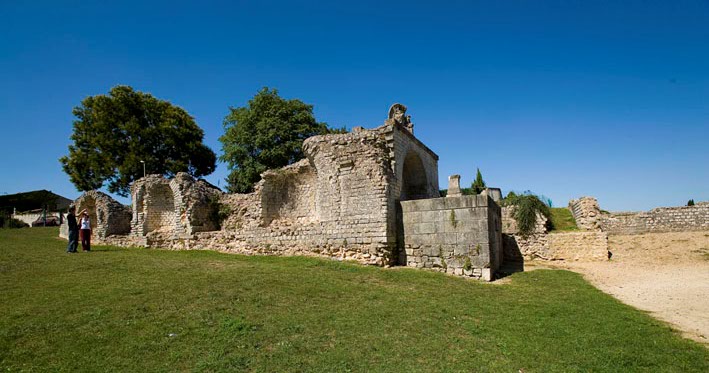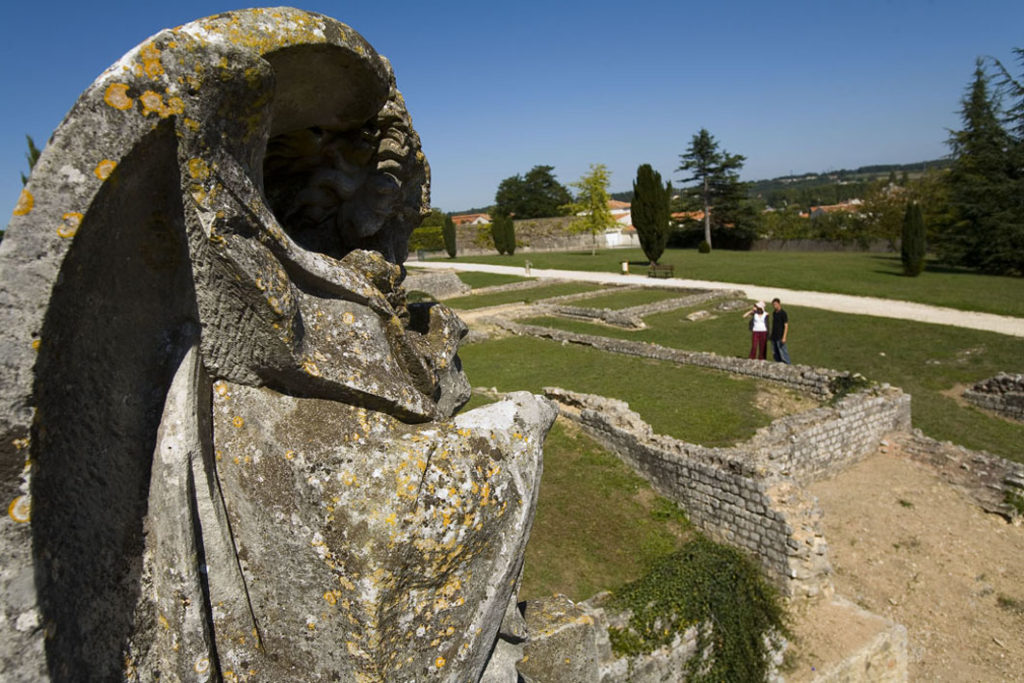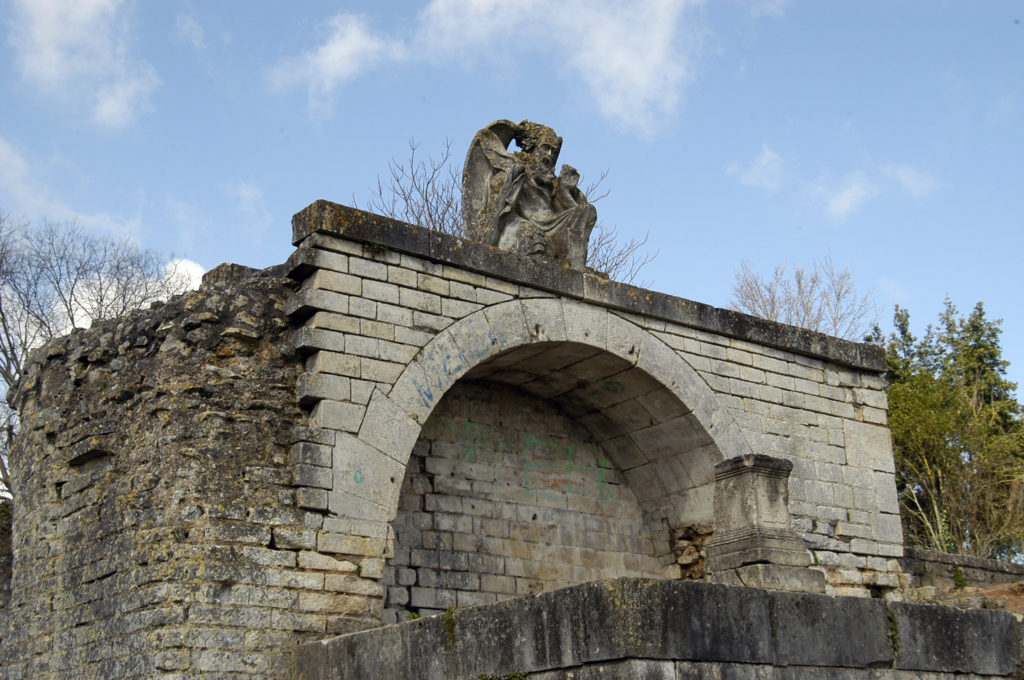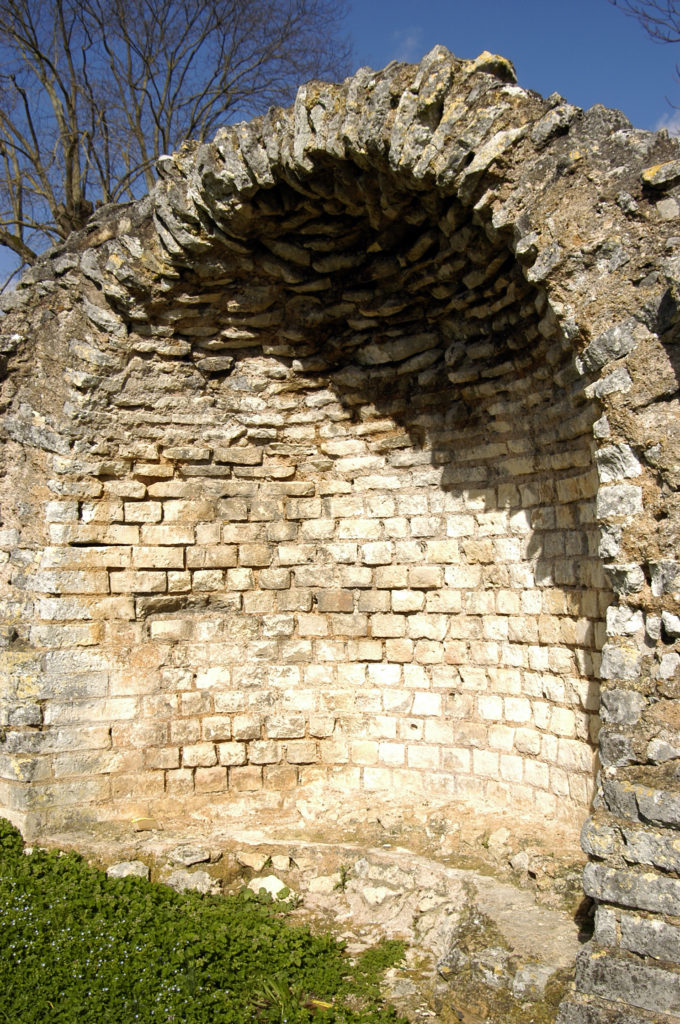The baths, a new lifestyle!
During the Roman era, baths played a leading role in social life, and many cities and towns had their own. In Saintes, there were three known complexes, including the Saint-Saloine Baths.

The baths symbolized a new lifestyle, inherited from the Greeks, combining hygiene, relaxation and social life. Libraries, shops and relaxation areas could be found nearby or even inside a bathing complex!
You started by undressing. You then entered the baths with only a towel, some oil and possibly a sponge and a strigil (a curved body scraper). You covered your body with oil and did a little sport. Then, you headed to the caldarium (a hot, humid room) to sweat.

You took a seat in that room around the labrum (basin). You coated yourself with oil and then spritzed yourself with boiling water whilst removing your perspiration with your strigil. Next, you moved on to the tepidarium (the warm room), where you could get a massage.

You ended in the frigidarium (the cold room) to close your pores. Once you were clean and relaxed, you could go to the library, wander through the gardens or enjoy one of the lounge rooms. Effective, right?

The Saint-Saloine Baths were built toward the end of the 1st century. They covered 8,000 m2. Only the southeastern third remains today. Excavating the ruins revealed part of the hot bath (caldarium) section, framed by a retaining wall featuring characteristic niches.